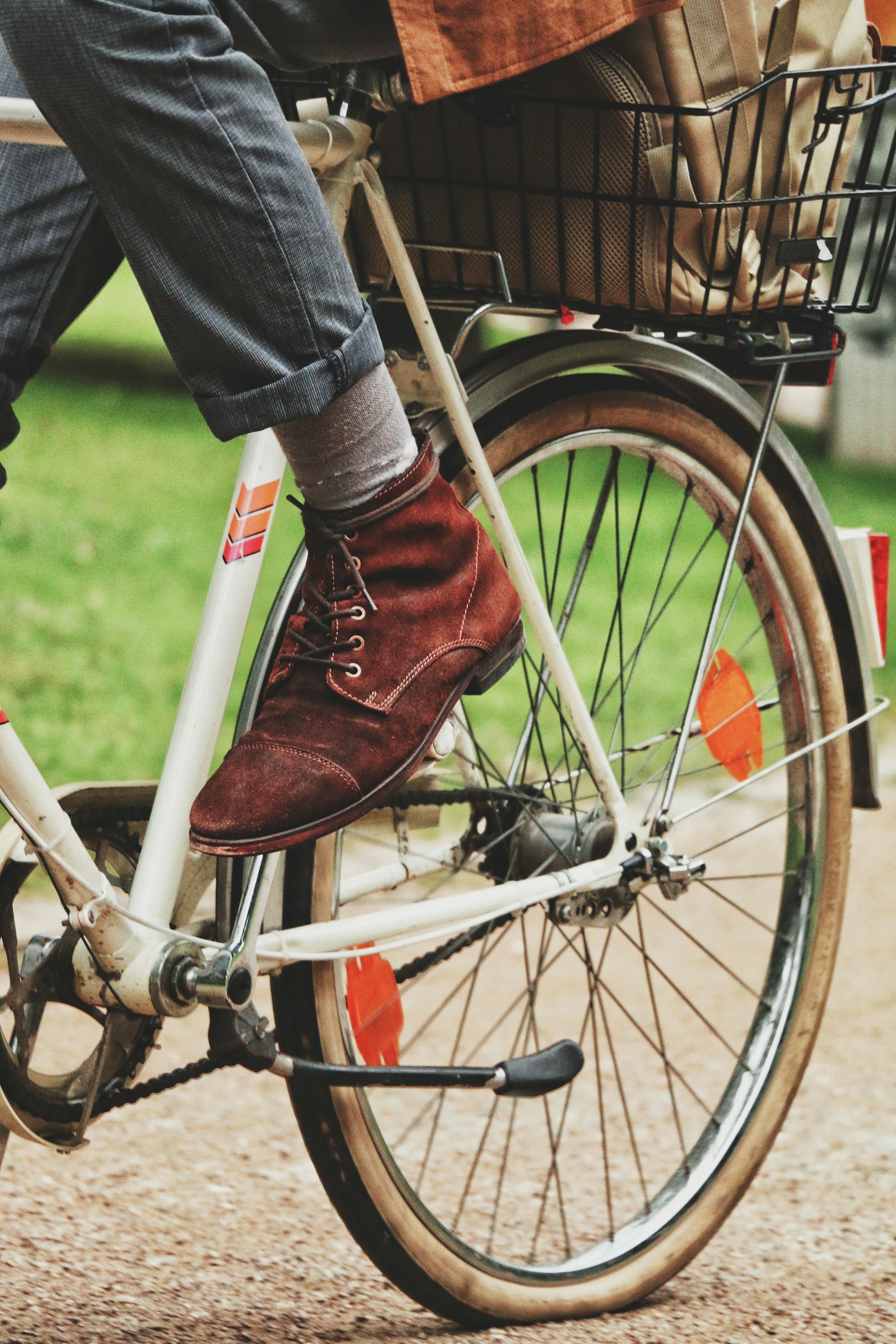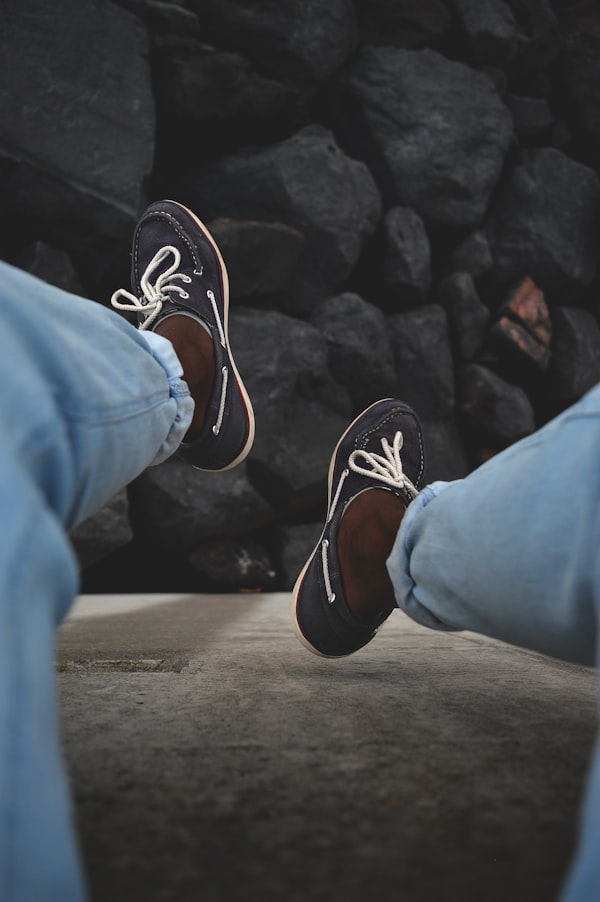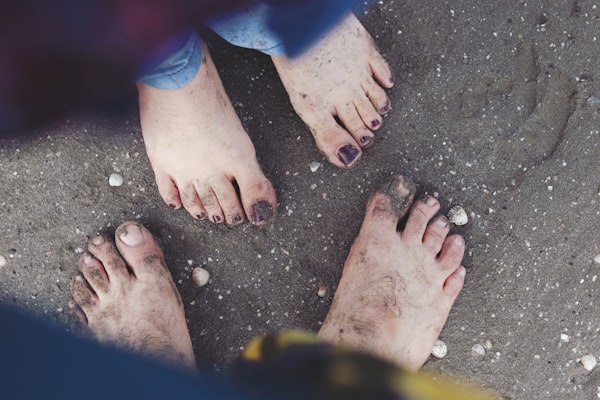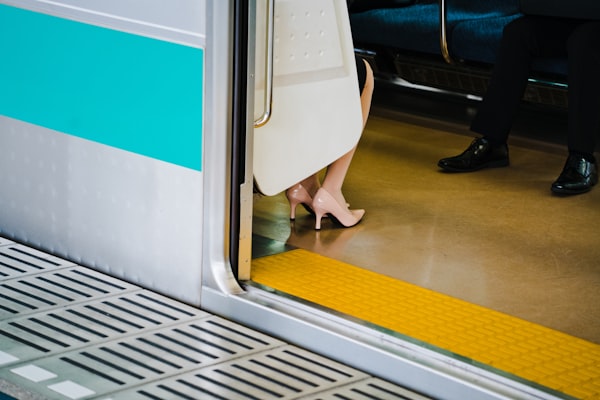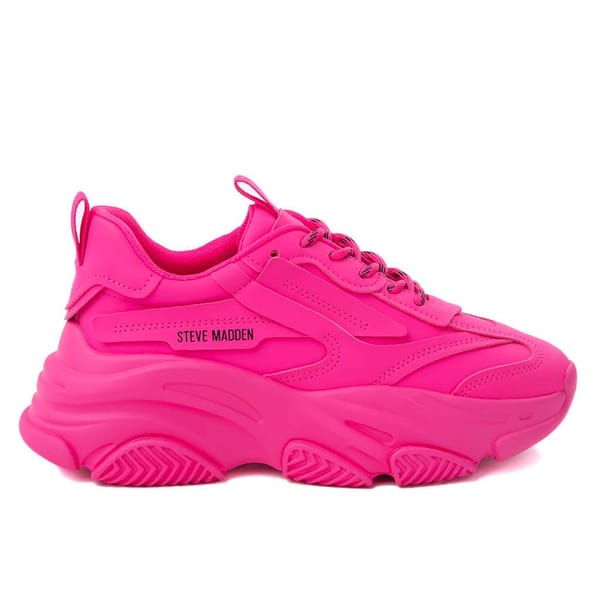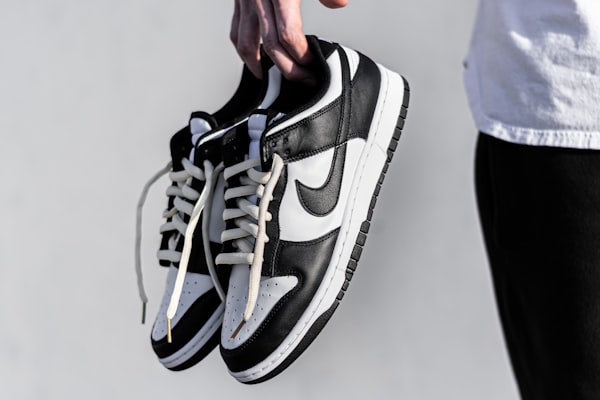Have you ever experienced the agony of ruining a fresh pedicure by putting on shoes too soon? We've all been there, trying to decide when it's safe to slip on our favorite closed-toe footwear without smudging our nails. Well, fear not because we're here to take you through the delicate art of timing and when to wear shoes after a pedicure.
We'll explore the different factors that affect drying time, including the type of polish used and the thickness of the layers. We'll also provide you with expert advice on how long to wait before putting on shoes and precautions you can take to protect your polish if you need to wear closed-toe shoes sooner than recommended.
Picture yourself confidently slipping on your favorite pair of shoes, knowing your perfectly polished toes are safe and secure. No more smudging or chipping, just pure pedi-perfection. With our expert tips and tricks, you can ensure your pedicure lasts days.
Ready to kick off your journey to pedi-perfection? Let's explore the timing of wearing shoes after a pedicure and ensure you always look and feel your best. So get ready to put your best foot forward and step into the wonderful world of pedicures!
*As an Amazon Associate, I earn a small commission from qualifying purchases at no cost to you.
Why Do I Need to Wait to Wear Shoes After a Pedicure?
Pedicures are essential to foot care, providing aesthetic and health benefits such as preventing nail infections and reducing foot odor. Knowing how long to wait before wearing shoes after a pedicure is critical to ensure that the polish is fully dry and to prevent smudging or chipping, which can ruin the appearance of the pedicure. Waiting the appropriate amount of time can help extend the life of the pedicure and ensure that you can enjoy your freshly polished toes for as long as possible.
Factors that Affect Drying Time and How Long to Wait
A well-done pedicure can leave you feeling pampered and put-together, but the last thing you want is to ruin your freshly painted nails by putting on shoes too soon. The drying time of your pedicure depends on various factors, and understanding them can help you protect your beautiful nail art or polish.
1. Type of Manicure or Polish Used
The type of manicure or polish you choose plays a significant role in determining the drying time. Here are some common types of pedicures and their respective drying methods:
Traditional Nail Polish
Traditional nail polish is a classic and widely available option that dries without the need for UV or LED lights. The drying time for this type of polish can vary depending on the number of coats applied and the specific brand. Here's a general guideline for drying times:
- Time until Dry to The Touch: Typically, traditional nail polish dries to the touch within 15 to 30 minutes after application. However, it's essential to handle your nails gently during this time to avoid smudging or imprints.
- Time until You Can Wear Open-Toe Shoes: To wear open-toe shoes comfortably, it's best to wait at least one hour after application.
- Time until You Can Wear Closed-Toe Shoes: For closed-toe shoes, it's recommended to wait at least two hours before putting them on.
- Time until Completely Dry/Cured: It can take up to 24 hours to fully cure and harden. The polish becomes more durable and resistant to chipping during this curing process.
Regular Gel Nail Polish
Gel nail polish, often referred to as a "shellac manicure," is a popular choice requiring curing under a UV or LED light. Using these lights helps the polish harden quickly, providing a longer-lasting and chip-resistant finish. Here's what you need to know about the drying time for regular gel nail polish:
- Time until Dry to The Touch: After each coat of regular gel polish is cured under the UV or LED light, it is completely dry to the touch. This typically takes 30 to 60 seconds for each coat, depending on the specific brand and the lamp's power.
- Time until You Can Wear Open-Toe Shoes: After applying the final top coat and curing it under the UV or LED light for 1-2 minutes, you can safely wear open-toe shoes.
- Time until You Can Wear Closed-Toe Shoes: To be on the safe side, wait at least two to three hours after the final coat is cured before putting on closed-toe shoes.
- Time until Completely Dry/Cured: The complete curing process can take up to 12 hours, during which the polish becomes even more durable and resistant to wear.
Breathable Nail Polish
Breathable nail polish is a unique type of polish that allows oxygen and water to pass through, promoting healthier nails. It is an excellent option for those who want to take care of their nails while still enjoying the benefits of polish. Here's what you need to know about the drying time for breathable nail polish:
- Time until Dry to The Touch: Breathable nail polish typically dries to the touch relatively quickly, usually within 10 to 15 minutes after application. The breathable formulation allows the solvents to evaporate faster, resulting in a quicker drying time compared to traditional nail polish.
- Time until You Can Wear Open-Toe Shoes: It's generally safe to wear open-toe shoes after waiting 30 minutes to one hour. However, you may want to exercise caution and avoid activities that could smudge the polish for a few hours.
- Time until You Can Wear Closed-Toe Shoes: It's best to wait at least one to two hours before wearing closed-toe shoes.
- Time until Completely Dry/Cured: For optimal results, it is recommended to wait at least two to three hours before engaging in activities that could potentially impact the polish's finish. The complete curing process may take up to 12 hours, during which the breathable formulation allows oxygen and moisture to pass through, promoting healthier nails.
Acrylic
Acrylic nails are a popular type of manicure involving a powder mixed with a monomer, forming a polymer applied to bare nails or extensions with a brush. The process creates durable and long-lasting nails. However, the drying time for acrylic nails is slightly longer due to the chemical reaction involved in the curing process. Here's what you need to know about the drying time for acrylic nails:
- Time until Dry to The Touch: After the acrylic application, the surface of the nails typically dries to the touch within 10 to 15 minutes. During this initial drying phase, the acrylic will harden slightly, allowing you to handle your nails carefully without damaging the design.
- Time until You Can Wear Open-Toe Shoes: To wear open-toe shoes comfortably, it's best to wait at least 30 minutes to one hour after the application.
- Time until You Can Wear Closed-Toe Shoes: Giving the acrylic nails ample time to fully cure before wearing closed-toe shoes is essential. Waiting at least two to three hours is recommended to ensure complete hardening.
- Time until Completely Dry/Cured: It can take up to 24 hours for acrylic nails to achieve their full strength and durability. During this curing period, avoid activities that could put excessive pressure on your nails to prevent any damage or distortion to the design.
Polygel
Polygel is a popular type of manicure that offers the benefits of both acrylic and gel nail polish. It comes in a tube with a gel-like consistency, making it easy to work with, and is applied to bare nails or extensions with a brush. Polygel is cured with a UV or LED light, providing a durable and long-lasting manicure. Here's what you need to know about the drying time for Polygel nails:
- Time until Dry to The Touch: Polygel is designed to cure quickly under a UV or LED light. After applying each layer of Polygel and curing it, the surface of the nails will be dry to the touch. This typically takes about 1 to 2 minutes per coat, depending on the power of the lamp and the thickness of the Polygel application.
- Time until You Can Wear Open-Toe Shoes: Once each coat of Polygel is cured under the UV or LED light, you can comfortably wear open-toe shoes. It's generally safe to do so after waiting for about 5 to 10 minutes for the final layer to cure completely.
- Time until You Can Wear Closed-Toe Shoes: It's recommended to wait at least one hour after the final layer is cured before wearing closed-toe shoes.
- Time until Completely Dry/Cured: For optimal results, it is advisable to wait at least two to three hours before engaging in activities that could potentially impact the polish's finish. The complete curing process can take up to 12 hours, during which the Polygel becomes even more durable and resistant to wear.
Dip Powder
Dip powder nails have gained popularity due to their durability and long-lasting formulation. This type of manicure involves a unique process of dipping the nail in finely ground acrylic powder after applying a resin polish. Unlike traditional nail polishes, dip powder cures instantly without the need for UV or LED lights. Here's what you need to know about the drying time for dip powder nails:
- Time until Dry to The Touch: The application process of dip powder nails is relatively quick, and the nails are dry to the touch almost instantly after the powder is applied. The resin polish dries quickly, creating a base for the dip powder to adhere to.
- Time until You Can Wear Open-Toe Shoes: As dip powder nails cure almost instantly, you can safely wear open-toe shoes immediately after the application process is completed.
- Time until You Can Wear Closed-Toe Shoes: Since dip powder nails cure instantly, you can confidently wear closed-toe shoes immediately after the application.
- Time until Completely Dry/Cured: Dip powder nails are considered fully dry and cured as soon as the application process is completed. Combining the resin polish and the acrylic powder creates a strong and durable finish that doesn't require additional curing time.
Builder Gel
Builder gel, also known as "builder gel in a bottle," is a thicker type of gel polish that can be used to strengthen and lengthen nails. It is applied to bare nails with a brush and can also be used with the assistance of a nail form for nail extensions. Builder gel is cured with a UV or LED light, providing a strong and long-lasting manicure. Here's what you need to know about the drying time for builder gel nails:
- Time until Dry to The Touch: Builder gel is designed to cure quickly under a UV or LED light. After applying each layer of builder gel and curing it, the surface of the nails will be dry to the touch. This typically takes about 1 to 2 minutes per coat, depending on the power of the lamp and the thickness of the builder gel application.
- Time until You Can Wear Open-Toe Shoes: Once each coat of builder gel is cured under the UV or LED light, you can comfortably wear open-toe shoes. It's generally safe to do so after waiting for about 5 to 10 minutes for the final layer to cure completely.
- Time until You Can Wear Closed-Toe Shoes: It's recommended to wait at least one hour after the final layer is cured before wearing closed-toe shoes.
- Time until Completely Dry/Cured: For optimal results, it is advisable to wait at least two to three hours before engaging in activities that could potentially impact the polish's finish. The complete curing process can take up to 12 hours, during which the builder gel becomes even more durable and resistant to wear.
Hard Gel Nail Polish
Hard gel is a type of gel polish that offers exceptional durability and chemical resistance. Unlike regular gel polish and builder gel, acetone cannot remove it. It is applied to bare nails using a foil sculpting tool and can also be used to lengthen nails with the assistance of a nail form. Hard gel nail polish is cured with a UV or LED light, providing a strong and long-lasting manicure. Here's what you need to know about the drying time for hard gel nail polish:
- Time until Dry to The Touch: Hard gel nail polish is designed to cure quickly under a UV or LED light. After applying each layer of hard gel and curing it, the surface of the nails will be dry to the touch. This typically takes about 1 to 2 minutes per coat, depending on the power of the lamp and the thickness of the hard gel application.
- Time until You Can Wear Open-Toe Shoes: It's generally safe to wear open-toe shoes after waiting about 5 to 10 minutes for the final layer to cure completely.
- Time until You Can Wear Closed-Toe Shoes: It's recommended to wait at least one hour after the final layer is cured before wearing closed-toe shoes.
- Time until Completely Dry/Cured: For optimal results, it is advisable to wait at least two to three hours before engaging in activities that could potentially impact the polish's finish. The complete curing process can take up to 12 hours, during which the hard gel becomes even more durable and resistant to wear.
2. Number of Coats Applied
The number of coats applied affects drying time. Each layer needs time to dry before applying the next coat. For traditional nail polish, each coat usually takes 5 to 10 minutes to dry to the touch. If multiple coats are applied, it's best to wait at least one to two hours before wearing closed-toe shoes to prevent smudging or imprints.
3. Brand and Quality of Nail Polish
Higher-quality polishes often contain ingredients that promote faster drying and resist smudging, resulting in a more efficient and professional-looking pedicure. Depending on the brand and quality, drying times can vary, but generally, premium polishes dry to the touch within 5 to 15 minutes, and you can wear closed-toe shoes after about an hour.
4. Nail Polish Drying Techniques
Quick-drying sprays and drops can significantly expedite drying by accelerating solvent evaporation. Depending on the product, the polish can dry to the touch within 1 to 2 minutes, allowing you to wear closed-toe shoes after 10 to 15 minutes. However, even with these products, waiting at least one to two hours for complete curing is advisable.
5. Ambient Temperature and Humidity Levels
Environmental conditions play a vital role in nail polish drying. Higher temperatures and lower humidity facilitate faster drying, while cooler temperatures and higher humidity can prolong the process. Choose a well-ventilated area with moderate temperatures and lower humidity for quicker drying results if possible.
6. Nail Polish Application Skill and Technique
Proper application techniques, such as even and thin coats, help ensure quicker drying. Rushed or inexperienced application may result in thicker coats that take longer to dry and are more prone to smudging or chipping. Be patient and take your time during application to achieve the best results.
Timing truly is everything when it comes to the drying time of your pedicure. By considering these factors and being patient, you can protect your beautiful pedicure and ensure its longevity. Following the appropriate waiting periods will help you enjoy your pedicure to the fullest, free from smudges and imprints, and confidently step into any pair of shoes with flawless nails.
Precautions for Wearing Closed-Toe Shoes
After waiting the appropriate amount of time before wearing closed-toe shoes, taking precautions to protect your freshly polished toes is essential. One of the most crucial steps is to wear roomy shoes to avoid smudging or chipping the polish. Tight or restrictive shoes can cause smudging or even remove some of the polish, so it's best to opt for shoes with enough room to accommodate your toes comfortably.
Another precaution is to wear socks or toe separators to protect the polish from rubbing against the inside of your shoes. This can help prevent unwanted smudging or smearing and protect your pedicure from damage.
Avoiding activities that can cause chipping or smudging, such as running, dancing, or any other strenuous physical activity, is also essential. These activities can cause your feet to sweat, making the polish more prone to smudging or chipping. But, again, it's best to wait until the polish is fully cured before engaging in any activities that can damage your pedicure.
By taking these precautions, you can help extend the life of your pedicure and keep your toes looking fabulous for days on end. So slip on those roomy shoes, grab your socks or toe separators, and show off your perfectly polished toes to the world!
Tips for Caring for Your Feet After a Pedicure and Making Your Pedicure Last Longer
- Avoid Soaking Feet: Avoid soaking your feet for at least 24 hours after the pedicure. Soaking your feet can cause the polish to soften and peel, leading to chipping and smudging. It's best to wait until the polish is fully cured before soaking your feet.
- Use a Topcoat: Use a topcoat or gel polish for extra protection. Topcoats can help seal the polish and protect it from damage, while gel polish is known for its long-lasting durability. However, it's important to note that gel polish requires a UV or LED light for curing and may take longer to dry than regular polish.
- Moisturize Daily: Keep your feet hydrated by applying moisturizer daily, especially to your heels and cuticles. Well-moisturized feet help preserve the longevity of your pedicure and prevent the polish from drying out and chipping.
- Reapply Topcoat: To extend the life of your pedicure, apply an additional layer of topcoat or gel polish every few days. This will help refresh the shine and protection of the polish, keeping your pedicure looking pristine for longer.
- Avoid Chemicals: It's crucial to avoid using harsh chemicals or tools on your toes, such as acetone or metal tools. These can damage the polish and cause it to chip or peel. Instead, opt for gentle, non-acetone polish removers and use soft tools like a gentle nail file to shape your nails.
- Protect Feet in Pools and Showers: If you plan to spend time in chlorinated pools or public showers, consider wearing flip-flops or water-resistant footwear to shield your pedicure from exposure to harsh chemicals and potential damage.
- Consider Your Shoes: Opt for open-toe or well-fitted shoes that allow ample space for your toes. Tight or ill-fitting shoes can cause friction and lead to premature chipping or smudging. Choosing comfortable footwear helps maintain the beauty of your pedicure.
- Avoid Prolonged Sun Exposure: UV rays from the sun can cause the polish color to fade over time. When spending extended periods in the sun, consider using sunscreen on your feet or wearing sandals to minimize direct sunlight exposure.
- Regular Maintenance: Keep up with regular maintenance by touching up any chips or imperfections as they appear. A quick touch-up can refresh your pedicure's appearance and prevent any minor issues from becoming more significant problems.
Frequently Asked Questions
1. How can I speed up the drying process after a pedicure?
You can use a quick-drying spray or drops specifically designed for nail polish to speed up the drying process after a pedicure. Alternatively, you can gently blow cool air on your nails or use a fan. However, be cautious not to use heat, as it may interfere with the curing process of certain nail polishes.
2. Can I take a bath after a pedicure?
It's best to avoid taking a bath for at least 24 hours after a pedicure. Soaking your feet in water can soften the polish and increase the risk of chipping or peeling.
3. Can I shower after a pedicure?
You can shower after a pedicure but try to keep your feet away from direct water flow for the first 24 hours. If possible, take a gentle shower, avoiding prolonged exposure to water on your freshly polished toes.
4. Can I swim after a pedicure?
It's recommended to avoid swimming for at least 24 hours after a pedicure, as the chlorine and chemicals in the pool water may affect the polish. If you must swim, wear water-resistant footwear to protect your pedicure.
5. Can I wear socks after a pedicure?
After getting a pedicure, waiting at least a couple of hours is generally recommended before wearing socks. This allows the nail polish to fully dry and harden, reducing the risk of smudging or imprints on the nails caused by tight-fitting socks.
To be on the safe side, some experts advise waiting up to three hours before wearing socks after a pedicure. However, it's essential to consider the type of nail polish used and its specific drying time. If you have any doubts, it's best to follow the instructions provided by the nail technician or the nail polish manufacturer.
Remember that wearing loose-fitting or breathable socks can be a better option, as they minimize friction and allow better airflow around the toes, helping to maintain the longevity of your pedicure. If possible, wearing open-toe shoes or sandals for a few hours after the pedicure can also help protect the freshly painted nails and ensure a flawless finish.
6. What is the best shoe to wear after a pedicure?
Sandals or flip-flops are ideal choices to wear after a pedicure. They provide ample space for your toes and prevent any friction that could damage the polish.
7. What types of shoes to avoid after a pedicure?
Avoid wearing tight-fitting or closed-toe shoes immediately after a pedicure, as they can smudge or damage the polish. High heels and boots with tight toe boxes may not provide enough space for your toes.
8. What shoes to wear after a pedicure in the winter?
In winter, opt for open-toe boots or shoes with a wide toe box to accommodate your freshly pedicured toes comfortably. Fuzzy socks can also provide warmth while keeping your feet cozy and stylish.
9. Can I go for a pedicure if I have a foot infection or open wound?
It's best to avoid getting a pedicure if you have a foot infection or open wound to prevent the risk of spreading bacteria. Wait until your foot has healed before scheduling a pedicure.
10. Can I apply regular nail polish over gel polish?
While it is possible to apply regular nail polish over gel polish, it may not adhere as well, and the overall durability may be compromised. It's best to use a gel topcoat for added protection and shine.
11. Can I remove gel polish at home, or do I need to visit a salon?
While gel polish can be removed at home using acetone and foil wraps, it's recommended to visit a salon for professional removal to minimize damage to the nails.
12. Is it normal for my nails to feel sensitive after a pedicure?
It's normal for nails to feel slightly sensitive after a pedicure, especially if there was extensive filing or cuticle work. The sensitivity should subside within a day or two.
On a Final Note
Congratulations, you've made it to the end of our pedicure journey!
You're now equipped with all the knowledge you need to rock a perfect pedi sans any shoe-related mishaps.
So slip on those open-toe sandals, and flaunt those fresh nails. And always remember, when it comes to pedicures, timing is everything!
Related Articles





